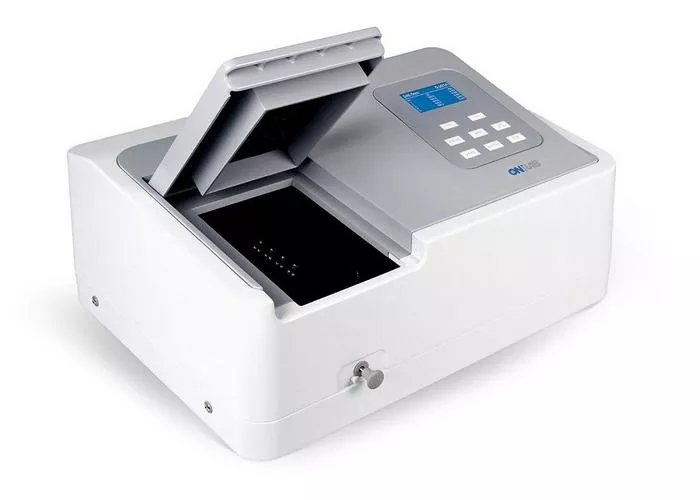A photospectrometer, also known as a spectrophotometer, is an essential instrument in scientific research and industrial applications. It is used to measure the intensity of light at different wavelengths to analyze the properties of materials. This device plays a crucial role in fields such as chemistry, physics, biology, pharmaceuticals, and environmental science. By understanding how a photospectrometer works, researchers and engineers can use it effectively for precise measurements.
This article will provide an in-depth explanation of the working principles of a photospectrometer, its components, and its applications in various industries.
What Is a Photospectrometer
The primary function of a photospectrometer is to measure the absorbance or transmittance of light by a sample. When light passes through a material, some of it is absorbed while the rest is transmitted. The amount of absorbed light varies depending on the composition and concentration of the sample. A photospectrometer quantifies this absorption by analyzing the intensity of light before and after it interacts with the sample.
The fundamental equation governing this process is the Beer-Lambert Law:
A=εclA
where:
- A is the absorbance,
- ε is the molar absorptivity (a constant specific to the substance),
- c is the concentration of the absorbing species in the sample,
- l is the path length of the light passing through the sample.
By measuring absorbance at specific wavelengths, a photospectrometer can determine the concentration of substances in a solution.
Components of a Photospectrometer
A photospectrometer consists of several key components, each of which plays a vital role in ensuring accurate measurements. These components include:
1. Light Source
The light source generates the electromagnetic radiation used for analysis. Different types of light sources are used depending on the spectral range:
- Tungsten-halogen lamps (for visible and near-infrared light)
- Deuterium lamps (for ultraviolet light)
- Xenon arc lamps (for broad-spectrum applications)
2. Monochromator
A monochromator is responsible for selecting specific wavelengths of light. It consists of:
- Diffraction grating or prisms to disperse light into different wavelengths
- Slits to allow only a narrow band of wavelengths to pass through
By controlling the monochromator, the spectrometer can analyze specific regions of the electromagnetic spectrum.
3. Sample Holder (Cuvette)
The sample is placed in a transparent container called a cuvette, which allows light to pass through it. Cuvettes are typically made of quartz, glass, or plastic, depending on the spectral range of interest.
4. Detector
The detector measures the intensity of light after it passes through the sample. Common types of detectors include:
- Photodiodes (for visible and near-infrared detection)
- Photomultiplier tubes (PMTs) (for high-sensitivity applications)
- Charge-coupled devices (CCDs) (for capturing multiple wavelengths simultaneously)
5. Data Processing Unit
Modern spectrophotometers include a microprocessor or computer to analyze the detected signals and display results in a user-friendly format.
How Does a Photospectrometer Work
Step 1: Light Generation
The light source emits a continuous spectrum of radiation that covers the desired wavelength range.
Step 2: Wavelength Selection
The monochromator disperses the emitted light and isolates a specific wavelength, directing it towards the sample.
Step 3: Interaction with Sample
The selected light passes through the sample in the cuvette. Depending on the sample’s properties, a portion of the light is absorbed, while the rest is transmitted.
Step 4: Detection and Measurement
The transmitted light reaches the detector, where the intensity is recorded and compared to a reference (usually a blank sample or air).
Step 5: Data Analysis and Display
The instrument calculates the absorbance or transmittance and presents the data in numerical or graphical form for interpretation.
Types of Photospectrometers
1. UV-Visible Spectrophotometers
These spectrometers operate in the ultraviolet (UV) and visible regions (200-800 nm). They are widely used for analyzing chemical and biological samples.
2. Infrared (IR) Spectrophotometers
IR spectrophotometers measure absorption in the infrared region (700 nm – 1 mm) and are commonly used in material identification and molecular structure analysis.
3. Atomic Absorption Spectrophotometers (AAS)
AAS instruments measure the absorption of specific wavelengths by free atoms in a gaseous state and are used for trace metal analysis.
Applications of Photospectrometers
1. Chemical and Pharmaceutical Industry
- Quality control of drugs and chemicals
- Concentration analysis of active pharmaceutical ingredients (APIs)
2. Environmental Monitoring
- Detection of pollutants in water and air
- Analysis of soil contaminants
3. Food and Beverage Industry
- Determination of food color and additives
- Monitoring of nutritional components (e.g., vitamin content)
4. Medical and Clinical Diagnostics
- Blood analysis (e.g., hemoglobin concentration)
- Detection of biomarkers for diseases
5. Material Science and Engineering
- Optical property characterization of materials
- Thin-film analysis
Advantages of Photospectrometers
- High Accuracy and Sensitivity: Capable of detecting minute concentration changes.
- Non-Destructive Analysis: Allows sample analysis without altering its properties.
- Rapid and Reliable Measurements: Provides quick and reproducible results.
- Wide Range of Applications: Useful in multiple industries and research fields.
Conclusion
A photospectrometer is an indispensable tool in scientific research and industrial applications. By measuring the absorbance or transmittance of light across different wavelengths, it provides valuable insights into the composition and concentration of substances. Understanding the working principles and applications of a photospectrometer enables engineers, researchers, and scientists to leverage its capabilities effectively for analysis and quality control.
With advancements in technology, spectrophotometry continues to evolve, offering greater precision and automation for various analytical needs. Whether in pharmaceuticals, environmental science, or material analysis, this instrument remains a cornerstone of modern scientific measurement techniques.

